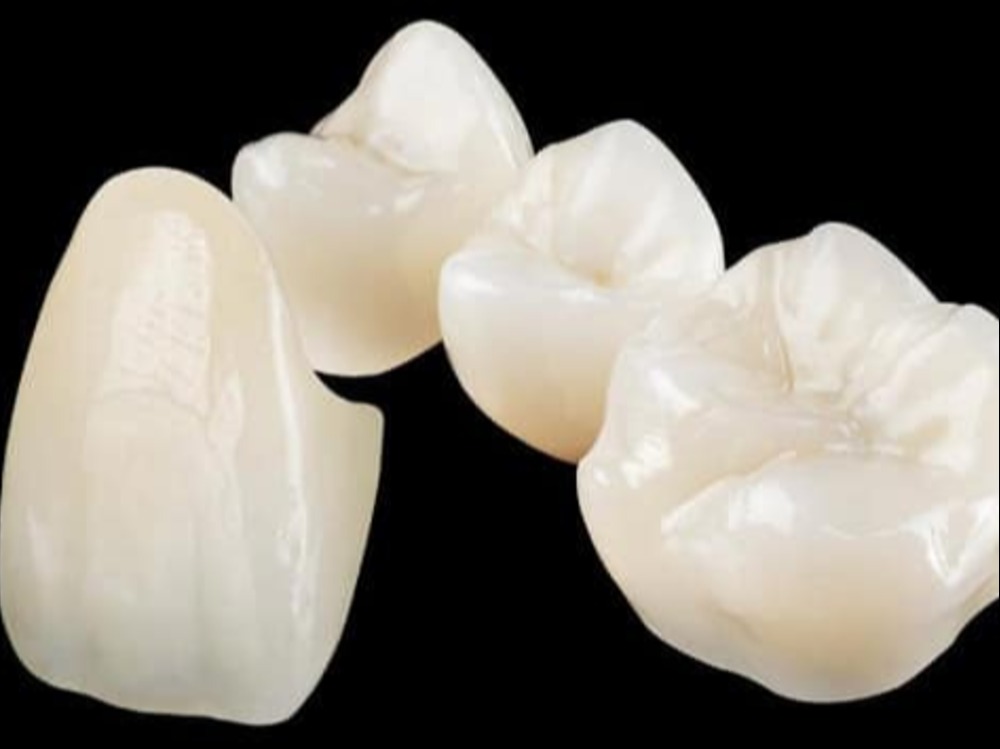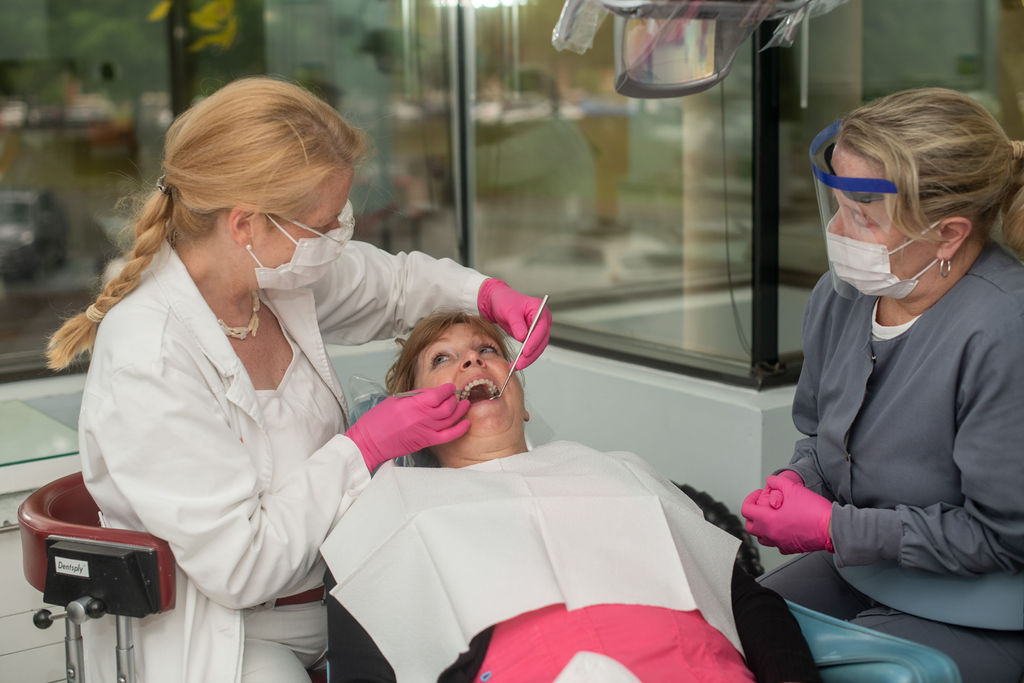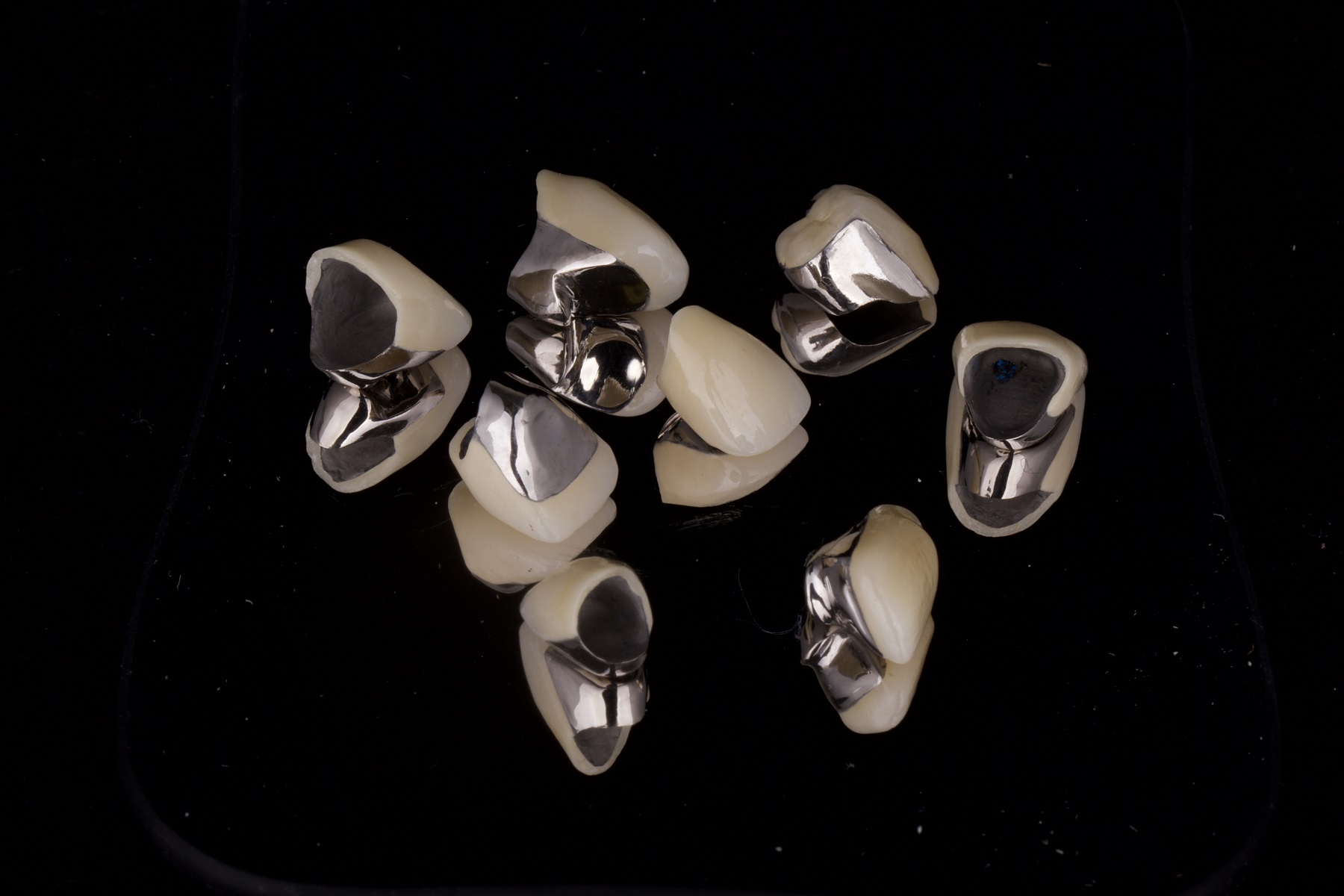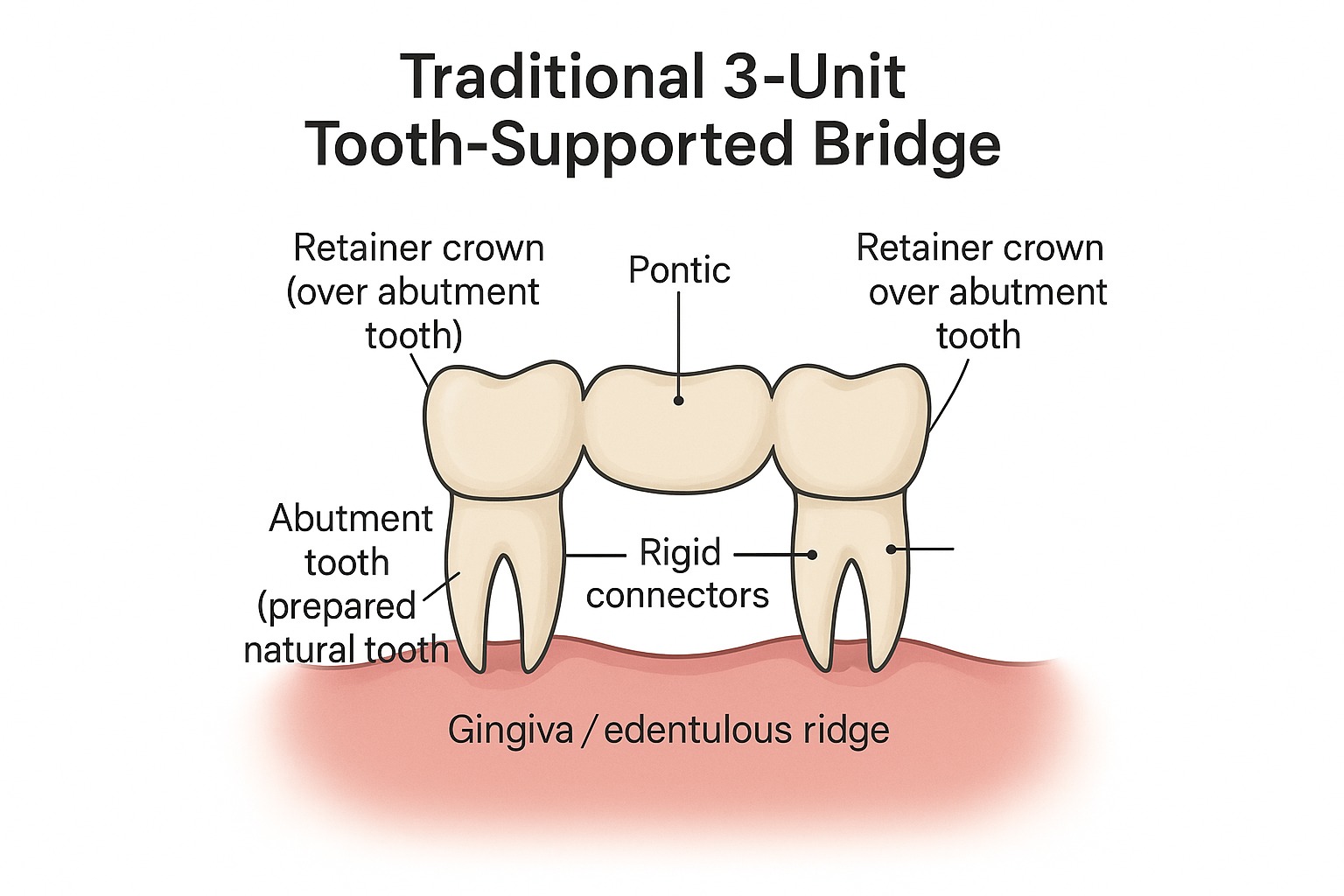What are dental crowns, onlays and bridges?


A dental crown is a tooth-shaped “cap”. It is placed over and affixed to a prepared tooth. It covers the tooth to restore its shape, size, strength, and improve its appearance.
Once placed, the crown fully covers the entire visible part of a tooth that lies at and above the gum line.
When a crown or onlay may be indicated:
- To protect a tooth with large fillings or a root canal
- To protect the tooth from further cracking
- To restore severely worn teeth
Types of crowns
All-ceramic or porcelain crowns are excellent at matching the color of natural teeth. They work well for the front teeth as they appear translucent and natural. If the gum recedes over time these crowns will still appear natural at the gum line. They are less durable than PFM crowns as PFM crowns have the underlying structure of the high noble metal. This crown remains intact should at one point the ceramic component of the crown fracture. Porcelain and ceramic crowns are harder than the opposing natural teeth. To prevent unnecessary wear and enable a proper bite, the crown should be cut to precisely fit the contour of the opposing tooth.
PFM crowns yield a natural appearance and typically last longer than pure porcelain or ceramic crowns. The metal alloy component provides strength and a precision fit to the underlying tooth substrate. Under the high temperature in a ceramic oven, the porcelain or ceramic will be baked onto the metal. PFM crowns have a higher cost for time and materials, yet generally, last longer than their porcelain or ceramic counterparts.

Zirconia crowns are very strong and durable. These crowns are saved for very specific cases due to their hardness against the opposing dentition.
Gold alloy crowns are typically used in less visible parts of the mouth such as the bicuspids or molars. Unlike conventional ceramic or porcelain crowns less tooth substance needs to be excavated to prepare a substrate for a PFM or gold crown. Gold crowns can last more than 50 years and are often prescribed for individuals who grind their teeth (bruxism). The gold crown will wear down the opposing teeth less than a ceramic or porcelain one.
Resin-based or acrylic and used to protect your tooth while your permanent crown is being fabricated.
What to expect: the crown process
We begin with a full examination and X-rays to evaluate your tooth. The tooth is carefully shaped to preserve as much natural structure as possible. If additional support is needed, we may perform a core build-up before preparing for the crown.
Detailed impressions are taken (digital or conventional) to ensure an exact fit and natural bite. A temporary crown is placed to protect your tooth.
Your crown is custom-made by one of our trusted, high-quality dental laboratories, with attention to shape, shade, and detail.
On your second visit, your permanent crown is tried in, adjusted for comfort and esthetics, and cemented into place with long-lasting adhesive.
How long do crowns last?

Dental Bridge
Bridges are dental restorations used to replace one or more missing teeth by anchoring artificial teeth to the adjacent natural teeth or implants.
A dental bridge is a fixed, multi-unit restorations that replace missing teeth with balance, function, and life-like aesthetics. Ceramic or PFM (porcelain-fused to metal) bridges are indicated when dental implants are not a long-term and predictable treatment option for the patient. Bridges involve “preparing” or reducing adjacent teeth as abutments to anchor the prosthesis in place. Bridges can be made of porcelain-fused to metal (preferrable) or all ceramic.
Function of bridges:
- Fill gaps caused by missing teeth
- Prevent shifting of adjacent teeth
- Restore chewing efficiency and speec
- Maintain proper bite alignment
Frequently asked questions
A dental crown is a tooth-shaped “cap”. It is placed over and affixed to a prepared tooth. It covers the tooth to restore its shape, size, strength, and improve its appearance.
Once placed, the crown fully covers the entire visible part of a tooth that lies at and above the gum line.
You may ask yourself “How do I know if I need a dental crown?” Common reasons include:
- Preservation of tooth structure. – for example to preserve structure if small fracture lines are visible)
- Improved tooth function or replacement
- Cosmetic reasons
- After a root canal treatment
These situations are described below.
Crowns are used for tooth preservation
A dental crown may be needed in the following situations:
- To protect a tooth with large fillings or a root canal
- To protect the tooth from further cracking
- To restore severely worn teeth
A crown may also be used as a support or complete tooth replacement mechanism
- To hold a dental bridge in place
- To cover an implant
Crowns are commonly used for cosmetic or functional improvements
- To cover misshaped or severely discolored teeth
- To enhance cosmetic appearance, improve chewing function and even speech
Commonly used types of dental crowns in Virginia
For most people, the best crown is one that cannot be distinguished from a natural tooth.
There are essentially four or five types of crowns commonly offered in most practices.
These include ceramic crowns, porcelain, porcelain fused to high noble metal, Zirconia, stainless steel, and gold. Also, temporary resin crowns are placed while a permanent crown is prepared in the laboratory.
Ceramic, porcelain crowns
All-ceramic or porcelain crowns are excellent at matching the color of natural teeth. They work well for the front teeth as they appear translucent and natural. If the gum recedes over time these crowns will still appear natural at the gum line. They are less durable than PFM crowns as PFM crowns have the underlying structure of the high noble metal. This crown remains intact should at one point the ceramic component of the crown fracture. Porcelain and ceramic crowns are harder than the opposing natural teeth. To prevent unnecessary wear and enable a proper bite, the crown should be cut to precisely fit the contour of the opposing tooth.
Dental PFM crowns
PFM crowns yield a natural appearance and typically last longer than pure porcelain or ceramic crowns. The metal alloy component provides strength and a precision fit to the underlying tooth substrate. Under the high temperature in a ceramic oven, the porcelain or ceramic will be baked onto the metal. PFM crowns have a higher cost for time and materials, yet generally, last longer than their porcelain or ceramic counterparts.
Gold alloy dental crowns
Gold alloy crowns are typically used in less visible parts of the mouth such as the bicuspids or molars. Unlike conventional ceramic or porcelain crowns less tooth substance needs to be excavated to prepare a substrate for a PFM or gold crown. Gold crowns can last more than 50 years and are often prescribed for individuals who grind their teeth (bruxism). The gold crown will wear down the opposing teeth less than a ceramic or porcelain one.
Temporary Crowns
All-resin dental crowns are less expensive than other crown types. However, they are a crafted from a softer material and wear down faster over time. This makes them more prone to fractures than porcelain-fused to high noble-metal-crowns. These crowns are mostly used as a temporary solution before the more permanent restoration is utilized.
Stainless steel crowns are prefabricated crowns that are used on permanent teeth primarily as a temporary measure. The crown protects the tooth or filling while a permanent crown is made from another material.
For children, a stainless steel crown is commonly used to fit over a primary tooth, which has been prepared to accept it. The crown covers the entire tooth and protects it from further decay or fracture. When the primary tooth falls out to make room for the permanent tooth, the crown comes with it. In general, stainless steel crowns are used for children’s teeth because they don’t require multiple dental visits to put in place and are more cost-effective.
Crowns and bridges – How we make them and why it matters to you
We take great care in taking impressions, the selection of crown materials, the the dental laboratories we use and in the final placement and function of the crowns or bridge.
Full Arch Impressions – quality begins here
We always take full-arch impressions. The impression determines the crown-to-tooth fit and the contact to the opposing teeth. A precise fit is essential for strength, comfort, and longevity. It also blocks microbial ingress, where the crown bonds to the tooth. Thus, there is little if any need to adjust the crown at the time of fitting. This assures the optimal placement, strength, adhesion, and seal.
Dental bio-materials – some are better than others
Advanced Dentistry of Richmond uses mostly porcelain fused to high noble metal crowns.
High noble metals, such as platinum/gold alloys are non-allergenic to gums and best protect the tooth from bacteria. Over many years the porcelain portion of the crown may fracture or chip. The tooth remains protected by the underlying gold alloy layer.
During your first visit, we inspect the tooth and assess the level of decay or need for reconstruction. We will take X-rays to determine the condition of the root and the spread of non-visible decay.
Next, we decide on the best treatment. Considerations include a multi-sided filling, a crown, an inlay, a bridge, or an implant. This depends on the severity of the decay, tooth position, bite, and other factors.
Oncewe finish preparing the tooth, we take impressions for both the upper and lower arches. These not only capture the contours of the prepared tooth but also that of the opposing tooth to assure a good bite.
Finally, we fit and cement a temporary crown on the tooth. After about two weeks, once the dental laboratory has finished preparing the crown, we will schedule an appointment to fit and cement the permanent crown.
On your second visit, we fit the crown. We check your bite and the contact surfaces to the opposing teeth.
You will have a chance to inspect the new crown. You will have an opportunity to discern how natural it looks and how the color and texture matches the surrounding teeth.
Finally, we cement the new crown to the prepared tooth with a long-lasting dental cement.
